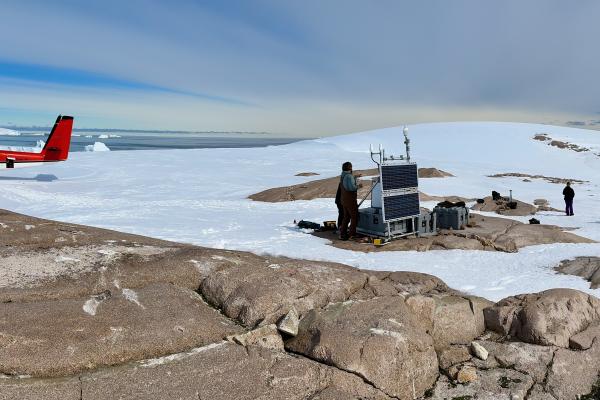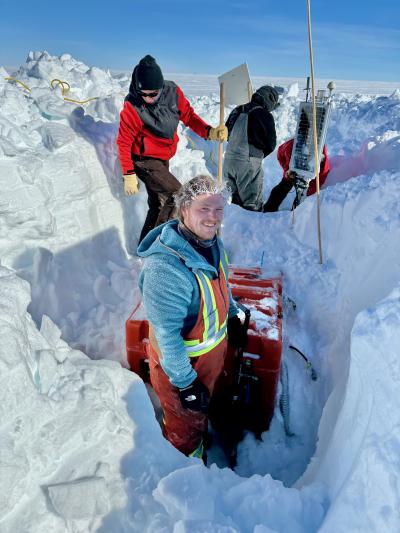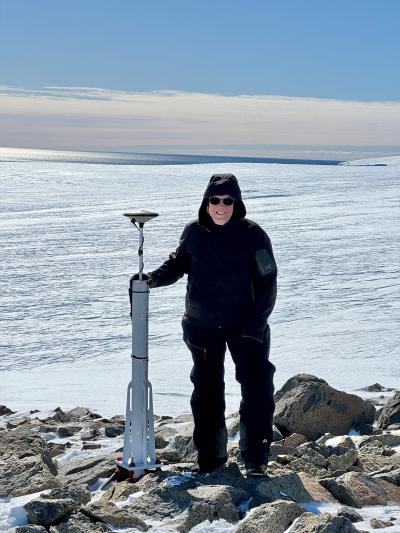The Role of Global Warming in Antarctic Earth Uplift and Future Sea Level Rise

New research reveals how the structure of the Earth beneath Antarctica could significantly influence future global sea levels under different climate scenarios. The study, led by Associate Professor Natalya Gomez at McGill University and published earlier this month in Science Advances, utilized advanced 3D models to simulate the interactions between Antarctic ice melt and the solid Earth's uplift. Earth Sciences Professor Emeritus Terry Wilson at The Ohio State University's Byrd Center was among the researchers collaborating on this study.
The research findings suggest that the solid Earth's response to ice melt plays a crucial role in shaping the Antarctic Ice Sheet's future contribution to global sea levels. Under scenarios of low global warming, the solid Earth's uplift could reduce Antarctica's contribution to sea level rise by about 40%. However, in high-warming scenarios, where greenhouse gas emissions continue to surge, the rapid ice loss will lead to uplift, which could exacerbate global sea level rise by expelling ocean water from exposed areas, intensifying the effects on coastal regions.



This comprehensive study draws on over a decade of new seismic and geodetic measurements from extensive fieldwork from the Antarctic Network (ANET) of the Polar Earth Observing Network (POLENET) project in Antarctica, contributing significantly to the understanding of how the solid Earth reacts to ice mass changes.
“Our measurements show that the solid Earth that forms the base of the Antarctic Ice Sheet is changing shape surprisingly quickly,“ said Wilson. “The land uplift from reduced ice on the surface is happening in decades, rather than over thousands of years.”
The simulations predicted the evolution of the Antarctic Ice Sheet and global sea level rise until the year 2500. Wilson attributed the model's unprecedented level of detail to its incorporation of data from Antarctica. GPS stations track land movements, while seismometers record the speed of seismic waves from earthquakes through the Earth, providing crucial information on areas where land uplift may occur rapidly or slowly. Wilson noted that the Antarctic Ice Sheet is experiencing a yearly solid earth uplift of about 5 centimeters, much faster than North America.
Another aspect of the study is the societal implications under different carbon emissions scenarios. Sea levels will not rise uniformly worldwide while the Antarctic ice changes. Some regions, particularly small island nations, are expected to experience higher-than-average sea level rises, underscoring the global inequities of climate impacts disproportionately affecting nearly 700 million people in coastal regions worldwide.
The study highlights the complexity of the interactions between the solid Earth and the processes occurring above it, emphasizing the necessity of ongoing data collection to enable timely and precise predictions about the future state of our planet over the coming centuries.
"There's a lot of uncertainty in every model and every prediction that you make," said Wilson. "But to document how fast our world is changing, it's very important to continue advancing our ability to make predictions that are more certain, which is the only path that will allow us to tend to our future in a meaningful way."

The study, which also included key contributions from collaborators at universities including Pennsylvania State University, the University of Massachusetts Amherst, Columbia University, Washington University, Colorado State University and the Union of Concerned Scientists, demonstrates the integrated efforts of seismologists, glaciologists, and climate scientists in tackling one of the most pressing environmental challenges of our time.
The U.S National Science Foundation and the Natural Sciences and Engineering Research Council of Canada supported this study.
Visit Ohio State News to learn more. Visit Science Advances to read about the study.

